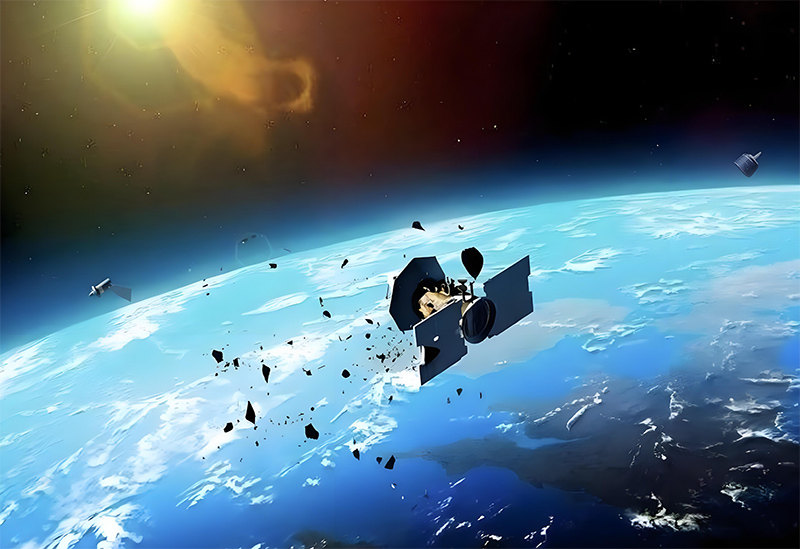As low-Earth orbit becomes increasingly crowded, the risk of collisions with space debris poses a threat to satellite operations and space mission safety. A Japanese research team has developed a new plasma thruster, leading to an innovative, non-contact, and efficient technology for removing space debris, potentially overcoming the limitations of existing methods. The findings, published in the journal Scientific Reports by Nature, have garnered widespread attention in the space science community.
The space debris problem is becoming increasingly serious. A large number of abandoned satellites, rocket debris, and tiny fragments are orbiting Earth at speeds far exceeding those of bullets, posing a serious threat to active satellites and spacecraft. A research team from Tohoku University in Japan noted that this uncontrolled debris significantly increases the risk to sustainable human space activities. While most current cleanup methods rely on direct contact, they carry the risk of entanglement. New methods using plasma thrusters to decelerate and de-orbit debris are becoming a research hotspot and represent the latest trend in space debris management.
The research team has proposed and demonstrated an innovative engineering solution. This method uses plasma emitted by satellites to slow down space debris, causing it to de-orbit and burn up upon re-entry into the atmosphere. However, traditional unidirectional injection produces strong recoil, causing the removal satellite to deviate from its target and weakening the deceleration effect. To this end, they developed a “bidirectional plasma injection type electrodeless plasma thruster” that can simultaneously inject two plasma streams in the direction and opposite direction of space debris, thereby offsetting the recoil and keeping the removal satellite stable.

To enhance deceleration efficiency, the team also introduced a special magnetic field structure called a “cusp” to confine the plasma plume and prevent its spread. In vacuum tube experiments simulating space conditions, the system not only achieved self-balancing but also tripled the deceleration force reported previously, demonstrating the remarkable performance of a state-of-the-art engineering technology.
Furthermore, the propulsion system uses inexpensive and abundant argon as a working fluid, making it both economical and practical. The team stated that this breakthrough provides an important technological path for the efficient and safe removal of space debris.
A laboratory previously used a visualization device to dynamically display space debris above Earth. Visually, the Earth appears to be entangled and wrapped in lines, and space debris is densely packed. This space debris will eventually become a major problem, and clearing Earth’s orbit is imperative. Researchers have proposed a new solution that allows a satellite to maintain its own stability while emitting plasma to decelerate and re-enter the atmosphere. This system is efficient, safe, low-cost, and scalable, representing the latest technological solution to addressing the challenges of the space environment. Cleaning up space debris is humanity’s responsibility, and we must take this issue seriously, with a sense of responsibility for the future.












